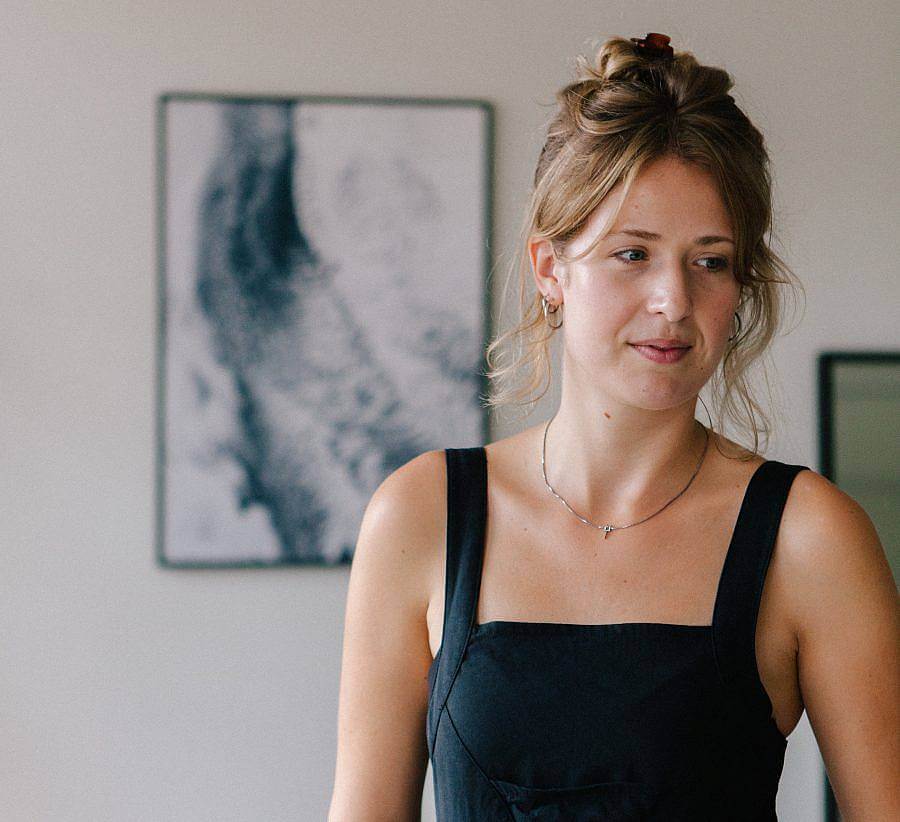Tell us a little bit about yourself and what you do.
This seems like such an easy question, but I’m afraid it’s actually one of the hardest ones you can ask, haha! I’ve always thought it was very difficult to narrow my work down to fit into one artistic field, since I have a background in graphic design and artistic research, but always had a love for photography and fine art. All these interests nowadays come together in some inbetween state, so I make autonomous abstract prints and paintings, use photographic techniques to accomplish this, while placing it in a design setting – which all came to being through the theories I’ve read and conversations I’ve had with my peers. Sometimes I even see myself as only a viewer, an outsider of my own art – or perhaps an art director, who knows exactly what works well together. But I guess that’ll make it even more confusing, haha.
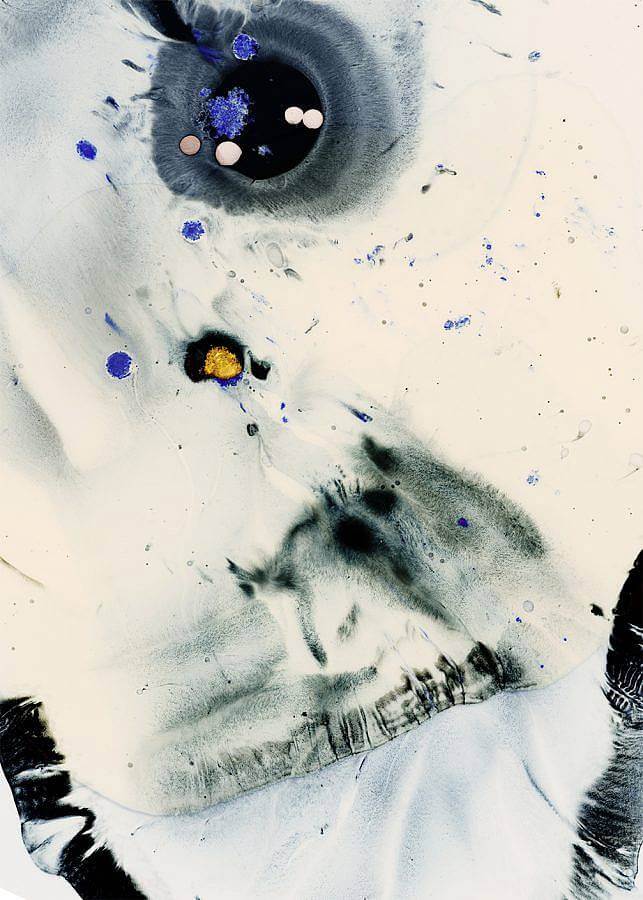
How did your interest in art or design begin?
I wouldn’t be able to tell you exactly when that started, since as long as I can remember I’ve been making things. When I was younger, it was basically all I did, all of the time – although it was way more scattered over different outputs, ranging from music to theatre, drawing and whatnot.
It was mostly during my artistic research master that I’ve developed my current view on or interest in art and design, and in specific the combination of these two. I’ve gotten to realize more and more that I’m very eager to make art, design and research more approachable. Even though I highly see the value of gallery spaces, I believe it to be extremely important to place my work in settings where people can actually continuously experience art and design, and let the work have more of an impact on them – let it become a part of them, another participant in their lives. I think the aspect of actually spending time with a work should get more attention. This is why I’ve decided to sell my prints in a limited edition for a very reasonable price, so people can hang it in their own home rather than see it in a gallery space, and am open to licensing my images for commercial use. Sometimes I wonder if this makes me a bit of a sell-out, but I try to remind myself that this is not about money but about my belief that art should be accessible – without it becoming decorative.
Since your work is the product of a combination of physical and digital “materials,” what is your process like?
I always start out with physical materials, preferably without having a clear idea of what I’m going to do with it. Most of the works I’ve made are a result of experiments with materials that had in some way caught my interest, and often I’ve come across interesting combinations by accident. I like to play around, and see myself a bit as an artistic scientist or chemist; curious to see the reaction of materials that usually do not work together. I also see myself in this part of the process as less important; of course I’m the one doing the experiments, but I actually try to follow the material. In this way I believe to be able to make combinations and visuals that I couldn’t have created if I thought it out beforehand. I like this space where I’m not the one that’s fully in control.
The experiments are digitized afterwards and used as components for digital collages. I use this combined physical and digital process not only to be able to zoom into the details of the physical experiments, but also to be able to create work that confuses the viewer. You see a clearly analogue root but still don’t really understand what it is you’re looking at. I kind of like to keep it that way, haha, I believe it to create an extra layer to the work and hope it enhances the experience of the viewer. Because you don’t really understand it, you can keep looking at it and find new little details every single time.
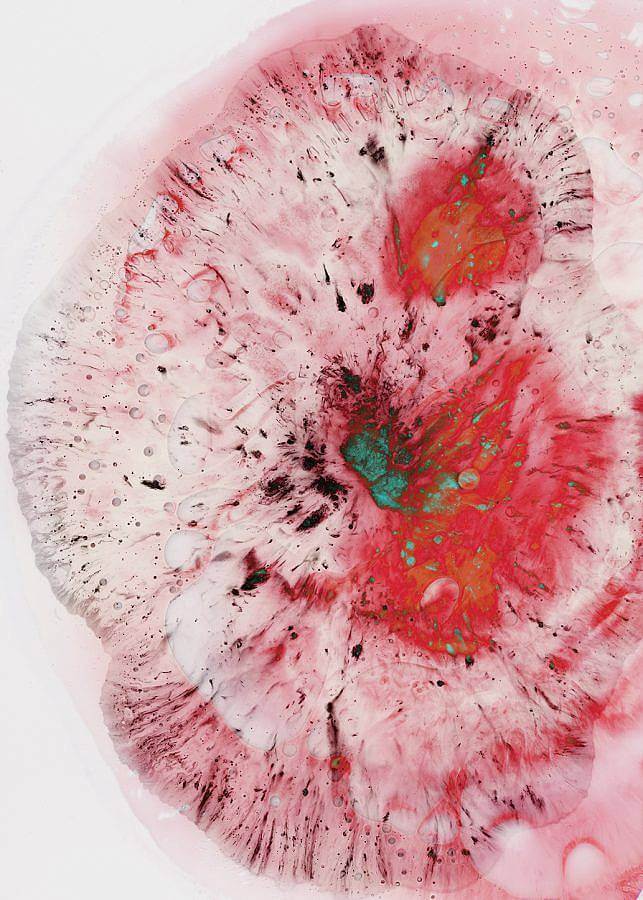
Can you talk about your Make me a Mixtape project?
It probably sounds cheesy, but music has always been a big part of my life. When I was younger, I was actually more into making music than into art. Nowadays it has a bit of a different use – rather than making music myself, I see it as one of the biggest influencers on my work. I always listen to music, all day long. Not only is it a way to set the mood while making work, I also see that the sounds influence the specific piece I’m working on at that moment. I think I like to be able to give proper credit to this, or give a different input into my work, by sharing the music that really inspires me – or of which my work is perhaps even an abstract visualisation. Besides this I believe all of my artistic endeavours are a way of creating a certain setting, a feeling, and I think one of the strongest ways of doing that is by the choice of music you play in a specific moment. So in that sense it’s not just a mixtape, but a part of my practice as a whole.
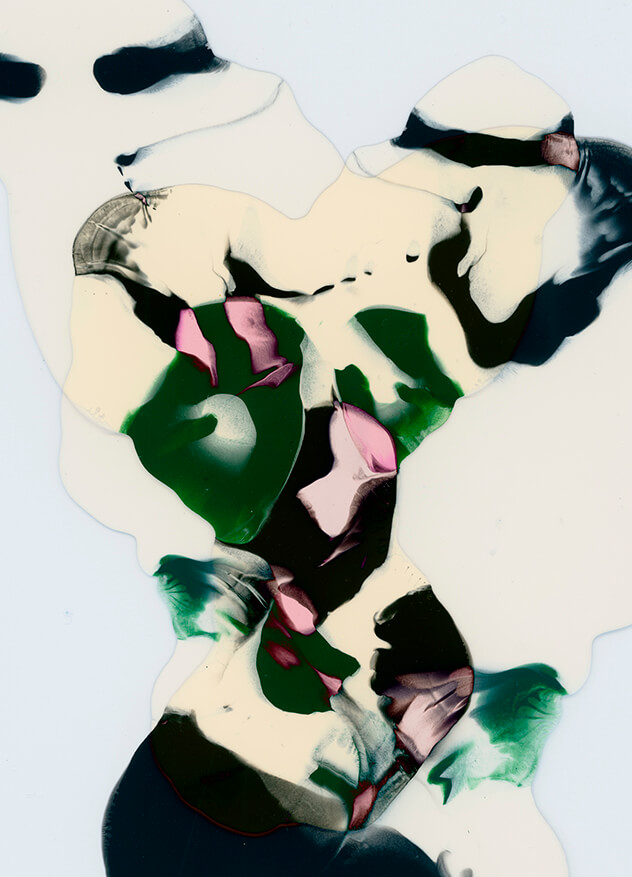
What kinds of things are influencing your work right now?
Like I said before, definitely music. Other than that, I would say everything and nothing, haha. I’ve always been a viewer; my favorite thing to do is look around. Simply just look. I love wandering around, get lost. I don’t think I’m ever really bored, basically everything interests me, but therefore I also believe it to be really difficult to pinpoint anything in specific that inspires me or influences my work. Especially since my work is made from intuition rather than a concept, it’s probably the collection of all my experiences that find their way into my work. I’m not the type of artist that dives into one topic and tries to find out everything there is to know in order to make work about it, even though sometimes I wish I could be.
How has your work changed over the years?
I haven’t always worked in such an intuitive and abstract way. Like I said, I actually have a background in graphic design and artistic research, both heavily based on concepts and theory. I think at some point I’ve gotten a bit allergic to both, especially during my master in artistic research – which was a master at the university, where you would combine academic research with an artistic practice. After a while it just seemed so weird to me; they let artists enter the university to be able to do their own kind of research, but in the end you still had to write a proper academic thesis on this same research. But isn’t the power of art actually that it does something other than create a linguistic discourse? Art doesn’t have rules and it has its own logic, its own way of thinking that is more so based in the physical senses rather than the rational. I think a lot of the knowledge that comes from art is something that cannot be understood or put in words, even how much you try to get close to it. So long story short, I couldn’t see how my idea of this – and therefore my practice – would fit into an academic paradigm without killing it. So I decided to quit my master, and focus on a practice that felt way more honest and natural to me. One in which I try to shut off my mind while creating and give myself the opportunity to be open to new discoveries through the material I work with and my own intuition and senses, rather than one where I would focus on talking or thinking about it too much. Of course, I still believe reflection on what it is you do is extremely important, if not necessary, but I believe the aspect of thinking should come after, and not before. It only seemed, or felt, logical to work in a way that stays away as far as possible from representation; so here I am now, simply just following wherever my work is taking me, like a leading force on its own rather than a result of something else.
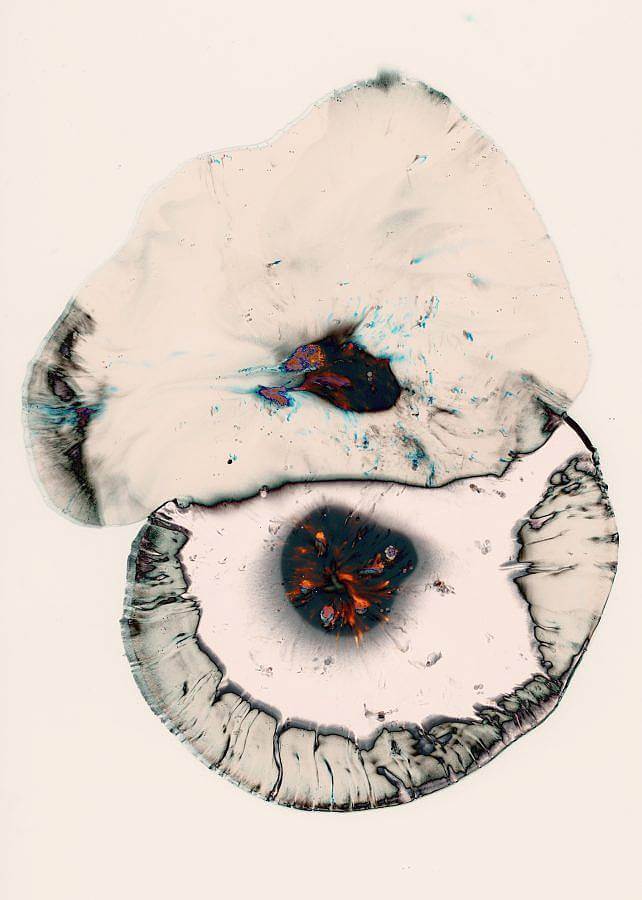
What is your favorite type of work to make and why?
Even though all of my current work is very abstract, I use a couple of different techniques, which all fit the setting or mood I’m in at the moment of working on it. There is not one favorite type of work then, I guess, since they all relate to what I feel like at that specific moment. It’s mostly the constant change of technique that I find interesting; I never like to work on the same thing for long, because as soon as it becomes a repetition, and as soon as I know too well how it works, I lose interest. It’s the constant search for this space where I don’t know yet what’s going to happen, how the material is going to react, that I like most. A lot of people might find this insecurity scary, but that is exactly what I find most thrilling – and I guess in that sense I’m more of an artist than a designer.
I am always looking out for ways artists who make digital work display their pieces in a physical gallery space. Is this something you’ve experimented with?
I actually see my work as mostly analogue – so it starts analogue, then turns into something digital, and ends up as something analogue again. I print most of my work as a giclee print on high quality paper, which is very tactile. The digital part of my process is mostly incorporated to confuse the viewer, do something to the work to make it difficult to trace or understand how it’s made. The quality of the giclee print is actually so high, that it has a bit more of a confusing effect as well. A lot of people think it’s an actual original, or don’t understand that there is no actual original in the first place. But to answer your question, since in all parts of the process I always look for ways to keep the level of materiality quite high, it is actually not that difficult to present it in a physical gallery. I would be very interested though to work with moving image in the future, because I think my work is very suitable for that, which then again would be a bit more of a challenge to present outside of the digital world. But definitely something worth trying out!
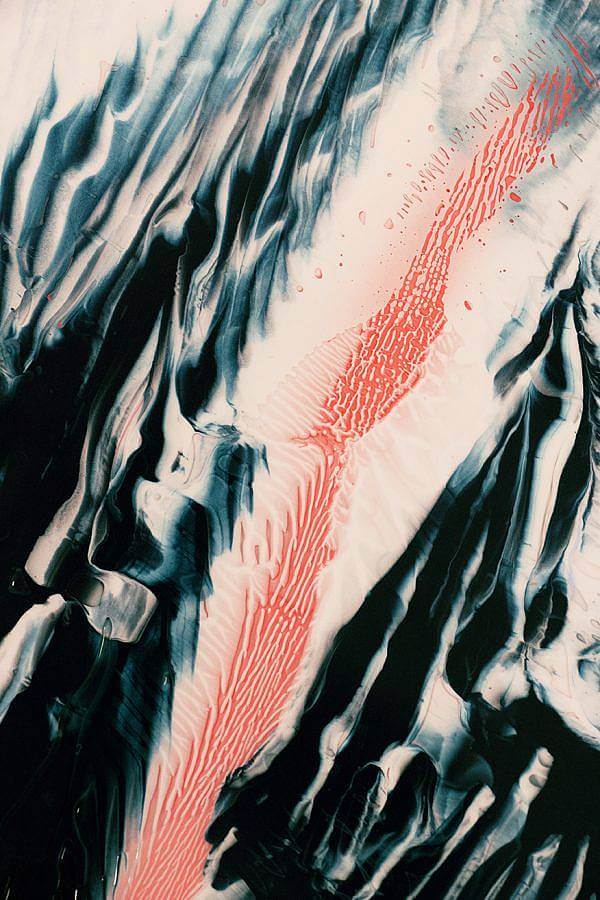
What do you want a viewer to walk away with after experiencing your work?
I don’t want to be the one to decide that. I think it’s very important to acknowledge as an artist that I don’t know about the full complexity of a work, and that every viewer has its own subjective interpretation – and he/she should also feel the space to experience the work as they please. So perhaps it’s more that I want the viewer to walk away with a feeling of openness; a feeling that they don’t have to understand and always do understand, because the only thing to understand is what they make of it.
Can you share one of the best or worst reactions you have gotten as a result of your work?
Once during the opening of an exhibition, almost at the end of the night, a guy who obviously was just a bypasser came in. I asked him why he was drawn to come inside, since it was already quite late and didn’t look like an opening anymore, and he clearly wasn’t planning on stopping by. He started talking to me about what kind of feeling and vibe he got from the work from outside, and that something made him come inside to have a closer look. He then analysed what he felt, mostly also what he felt from the maker through the work, something about lightness and darkness coming through – I believe he at that point still didn’t know he was talking to the artist herself, but perhaps that made him even more honest. It was a weird but very interesting conversation, haha, but what I thought was so intriguing was that my work is apparently sending out something. And that is what I get a lot: people feel something, often something strong, even though they cannot always tell me what it is. I think in the end, that is all that matters.
